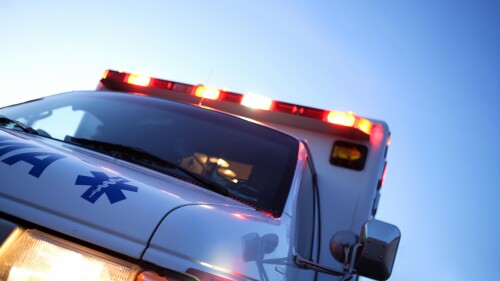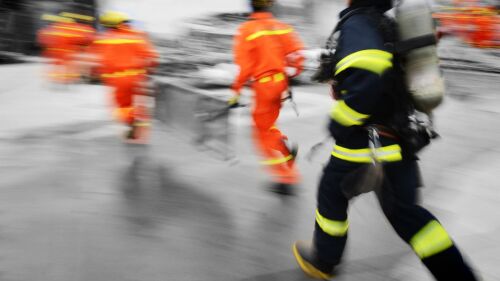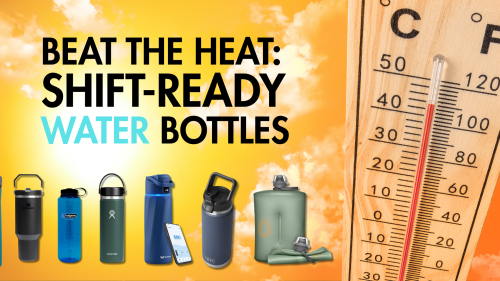BREAKING NEWS
A wrongful death lawsuit claims Hayward police and Falck paramedics repeatedly failed during the restraint and chemical sedation of a suspect, intensifying scrutiny of use of midazolam
Facing the first failed EMS levy in city history, the Clarkston City Council voted unanimously to use reserves to maintain emergency medical services for nine months
NEMSQA’s latest measures report finds that routine, high-frequency actions like preventing hypoxia in TBI and timely trauma alerts drive outcomes more than rarely performed procedures
The FDNY has appointed a veteran paramedic and longtime EMS leader to oversee citywide EMS operations amid ongoing staffing and pay challenges
A total of 10 Marion County Fire employees have been fired following an alleged violent hazing incident at Station 21, as the FD works to address its workplace culture and rebuild public trust
EXCLUSIVES
SPECIAL REPORTS
UPCOMING & ON-DEMAND EVENTS
New insight into the latest technology
Addressing the hidden dangers of cardiovascular disease
Prepare for the impact of extreme weather on critical infrastructure and EMS operations
Creating, developing and sustaining your own program, step by step
Expert perspectives on improving patient outcomes
Learn from a real-world use case of the rescue strike team and the three phases of deployment
Janet Taylor shares assessment and management tips for mastering seizure thresholds, classification and treatment approaches
What if scheduling and finalizing a transport could be done in 60 seconds?
Learn common triggers, assessment findings, and the different phases and classifications of seizures
Key findings from the Verizon Frontline Public Safety Communications survey
A detailed look at the actions leaders can take to implement a systems-level plan to protect their members
Adopting programs to improve EMS service delivery and agency culture
INDUSTRY INSIGHTS
Protecting providers starts with a glove that won’t easily fail
Small changes to how EMS approaches airway management and ventilation can make big differences in OHCA outcomes
It starts with sharpening decision-making skills
A webinar reviews key cases where the ‘most important vital sign’ helped shape care
Opioid-settlement dollars are already flowing to EMS – see how to use them to fund secure, compliant narcotics storage
OFF DUTY
Discover how providers can improve sleep and fight fatigue with simple changes like air filters, blackout curtains and humidity control
True-to-life emergency response finally gets the Hollywood treatment it deserves
Dive into a curated collection of must-read public safety books, from thrilling accounts and leadership lessons from the front lines, to read-aloud children’s favorites
Books
Explore the books EMS leaders, EMS1 contributors and experts recommend to advance your career, build leadership skills and inspire the next generation
How new federal tax rules could affect your paycheck, deductions and long-term savings
From paddleboarding and kayaking to fishing in remote areas, discover the gear, training and self-defense strategies outdoor enthusiasts need to stay safe on the water
Insulated, smart, and high-capacity bottles designed to help first responders beat dehydration on shift and beyond
What they’ll never tell you about why we stay
I lived to retire from the ambulance company
PRODUCT RESEARCH CATEGORIES
The EMS1 Vascular Access product category features information and resources on equipment used for vascular access for researching Vascular Access products, including intraosseous infusion systems.
The EMS1 Ventilation product category features information, product listings and resources for researching mechanical ventilation.
Records management software helps EMS agencies document, store, and access critical data related to patient care, operations, and compliance. This topic includes electronic patient care reporting (ePCR) systems, incident reporting tools, and data integration platforms. Effective records management supports accurate documentation, ensures quality assurance, facilitates billing, and promotes regulatory compliance. Choosing the right software can streamline workflows and improve data security. For equipment used to collect patient data in the field, see Diagnostic Equipment. Explore the articles in this topic to learn how software solutions support efficient EMS documentation and reporting.
Narcotics inventory management is essential for tracking controlled substances used by fire and EMS agencies. Effective systems help ensure accountability, prevent diversion, and maintain compliance with DEA regulations. Digital solutions support secure storage, chain-of-custody documentation, automated logging, and audit readiness. Proper narcotics inventory management also reduces errors and streamlines the restocking process. Agencies should establish clear policies, provide practical training, and maintain thorough oversight.
The EMS1 Medical Monitoring product category features products and information for researching EMS patient monitoring equipment, such as monitor/defibrillators, monitor mounts, AEDs, and other tools for successful patient assessment.
The CPR & Resuscitation product category features products and information for researching Cardiopulmonary Resuscitation (CPR) products.
The EMS1 Specialty Vehicles product category features products and information covering a variety of vehicles, including ambulances and command vehicles.
The EMS1 Ambulances product category features information, product listings and resources for researching ambulances.
The EMS1 Ambulance Safety product category is a collection of information, product listings and resources for researching Ambulance Safety solutions.
The EMS1 Fleet Management product category features information and resources for researching EMS Fleet Management and Ambulance Fleet Management products and programs.

















































